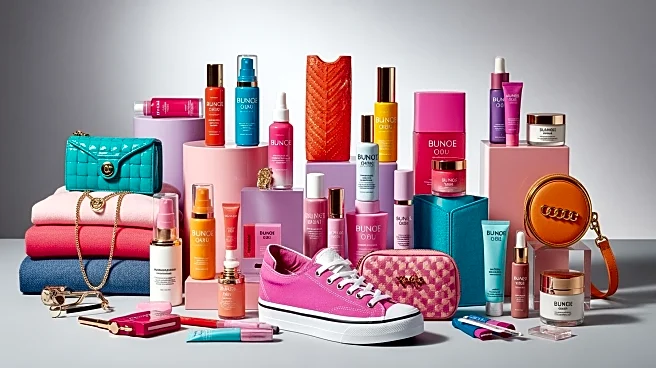What's Happening?
American Eagle's Chief Marketing Officer, Craig Brommers, has defended the company's recent summer ad campaign featuring Sydney Sweeney, which has sparked significant conversation and controversy. The campaign was criticized for its perceived 'pro-eugenics'
messaging due to its wordplay on 'jeans' and 'genes' and the choice of a blonde-haired, blue-eyed main character. Despite the backlash, Brommers maintains that the campaign was successful and that most consumers understood its intent. Speaking at Brandweek 2025 in Atlanta, Brommers argued that the negativity on social media was partly driven by bot traffic and emphasized the importance of standing firm in the face of criticism if the intentions are genuine and supported by customer and business data.
Why It's Important?
The controversy surrounding American Eagle's ad campaign highlights the challenges brands face in navigating public perception and social media dynamics. The situation underscores the delicate balance between creative expression and societal sensitivity. For American Eagle, the campaign's defense suggests a strategic decision to prioritize bold marketing over universally safe content, which could influence future advertising strategies across the industry. The outcome of this approach may impact consumer trust and brand loyalty, as well as set a precedent for how companies handle similar controversies. The broader significance lies in the potential shift towards more unapologetic marketing tactics in the fashion industry, which could either alienate or attract different consumer segments.
What's Next?
American Eagle may continue to monitor consumer reactions and sales data to assess the long-term impact of the campaign. The company might also engage in further public relations efforts to clarify its messaging and intentions. Industry observers will likely watch to see if other brands adopt similar bold marketing strategies or if they choose to play it safe to avoid backlash. The ongoing conversation around the campaign could lead to discussions about diversity and representation in advertising, potentially influencing future creative decisions within the fashion sector.
Beyond the Headlines
The controversy raises questions about the ethical responsibilities of brands in their advertising choices. It highlights the power of social media in shaping public discourse and the potential for automated accounts to amplify negative sentiment. The situation also reflects broader cultural debates about representation and inclusivity in media. As brands navigate these complex issues, they may need to consider more inclusive and diverse approaches to avoid alienating segments of their audience while still achieving impactful marketing.













